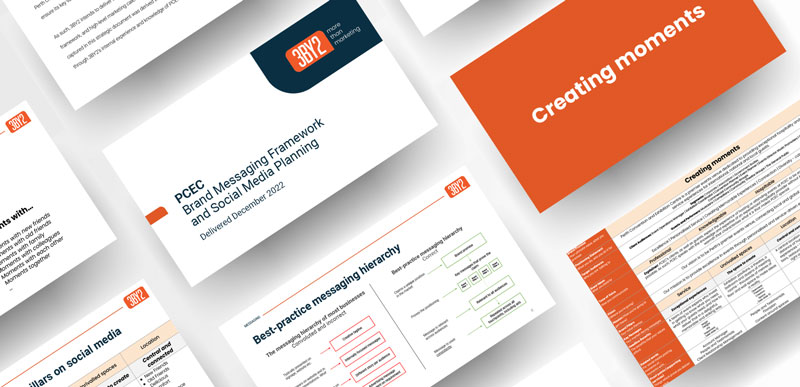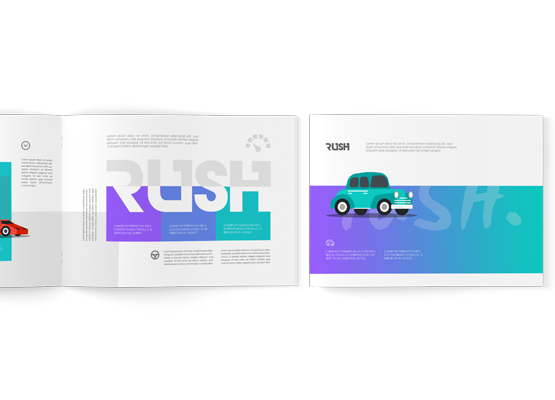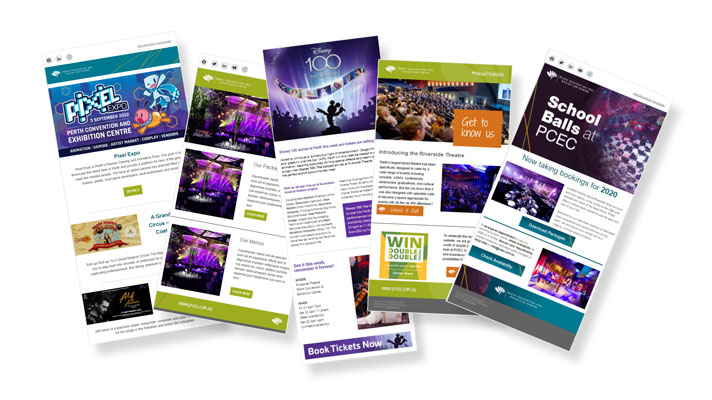Expert advice on what kind of Google advertising will work for you
For small businesses, Google is a competitive arena, with billions of brands competing for market share and employing strategies to bolster their online presence. Since 2000, Google has made it possible for businesses to place ads across search results pages and partner sites, in order to boost online visibility and increase site traffic.
Since these formative years, a lot has been happening in the world of Google Ads (previously known as Google AdWords), with the search engine launching several new advertising options. Currently, there are 7 different types of Google Ads campaigns for small businesses, each differentiated by the target business objective, the desired audience touchpoint, and the level of machine learning involved.
The following guide to Google advertising will provide an outline of the different campaign types and their corresponding goals, in order to help small business marketers make informed decisions.
Google Display | Brand Awareness
As its name suggests, a Google Display ad is more visual than a Search ad. These ads appear in the form of static images on banners, animations, videos, and interactive content, as sidebar or header panel inserts. All Display ads will appear across websites and apps that are a part of the Google Display Network (GDN), including Google’s own proprietary apps like Youtube and Gmail. These ads can either be loaded in their final design formats or as individual text, video, and image elements which Google combines to create a responsive ad that adapts to different screen sizes and resolutions.
When setting up a Google Display campaign, you will be able to select multiple targeting options based on your audience’s demographics. These targeted groups are divided into audience segments based on their buying behaviour, browsing habits, age, household income, and various other categories. This targeting, which is added at the beginning of the campaign creation process is how Google “chooses” which users to show your ad to and on which websites.
When to choose a Display campaign
Google Display ad campaigns can be cheaper than Search ads, although comparatively, they are not as effective at converting interest or leads into sales. The main job of a Display Ad is brand awareness – users may not necessarily click the ad, but they will read it or watch it based on whether it is eye-catching and visually stimulating.
Top tip
If you’re interested in creating a Google Display ad campaign, the best way to go about it would be to chat to your digital marketing agency and access their graphic design/video editing expertise. Display ads can be a hit-and-miss if they’re not striking and visually appealing.
Google Search | Strategic Execution for Valuable Conversions
If part of your small business marketing strategy is to invest in the practice of SEO, or search engine optimisation, then you’ll most likely be interested in how a Google Search campaign will perform. These ads appear on search results pages when users search for a specific keyword. If your website, product, or service offering is optimised for that keyword, it may very well appear as one of the first listings on the page and have a better chance of being clicked on. If not, a Google Search ad could do the trick.
These ads appear as sponsored listings right at the top of the results page for the specific keyword. When setting up Google ads for small businesses, the campaign manager will provide Google with a list of search terms that will trigger the placement of the ad. Multiple headlines, descriptions, URLs and display paths can be uploaded as options and Google will combine those options in different ways, using machine learning to determine the text structure that attracts the most interest.
When to choose a Search campaign
These ads work best for brands, products and product categories that users are already familiar with and are actively searching for using Google. Usually, the most effective conversions are users who entered the relevant search term with a high intent on making a purchase. These ads are therefore really about being in the right place, at the right time.
Top tip
Because Google Search ad campaigns are entirely text-driven, making use of a copywriter’s services is highly recommended. A full-service ad agency in Perth will be able to assist you or point you in the direction of a wordsmith that will help you write and craft the best headlines and descriptions to optimise your ad.
Google Video | Remarketing
Video content can be a powerful marketing tool, and with a Google Video campaign, you can get your message across via Youtube, which is currently one of the world’s most ubiquitous video content hubs. When you create a Video campaign using Google, there will be a few directions in which you can go. You could opt for an in-stream skippable ad, which can last anywhere between 12 seconds and 6 minutes; but can be skipped by users. Alternatively, you may wish to create an in-stream non-skippable video that can be between 15-20 seconds long, depending on your geographical region. Youtube also offers bumper ads which are best for viewing on mobile devices and are 6 seconds long.
Google will choose which users to show your video ad to based on the targeting criteria that you provide when the campaign is set up. Audience segments can be created using a combination of demographics including age, gender, interests, hobbies and Youtube browsing history.
When to choose a Video campaign
This type of Google advertising is best suited to a practice known as remarketing, which involves grabbing the attention of a user at different digital touchpoints and serving them variations of the same message in order to drive awareness, build interest and ultimately, convert those leads into sales.
Top tip
Your Google Video ad campaign will need to grab the attention of a Youtube user within seconds and hold that attention long enough to get your message across. Only the most compelling, expertly edited and creatively conceptualised videos do well. Reaching out to a professional video editor or a digital marketing agency with multiple capabilities will help you make sure you optimise your creative budget and spend your money on producing the best product possible.
Google Shopping | Sales Conversions
Like Google Search ads, Shopping campaign ads appear when users search for specific keywords, or more specifically, for the names of actual products. These ads differ from Search ads in two important ways. Firstly, they will include the product name, the name of the e-commerce store or online seller, the price and an image of the product, whereas Search ads feature text exclusively. Secondly, these ads not only appear as sponsored listings at the top of search engine results pages as well as in sidebars and ad panels on websites. They also appear as listings under Google’s Shopping search tab – a digital space dedicated solely to e-commerce offerings that allows users to view products across multiple stores at once.
What’s great about Google Shopping ads is that they attract the ‘right kind’ of click – a user who is unable to afford a product is very unlikely to click the ad, and those who do, will likely have a high intent of purchasing.
When to choose a Shopping campaign
These ads are perfect for e-commerce businesses and an effective way of pushing products alongside competitor sites. They are particularly effective in circumstances where the relevant business offers competitive deals and pricing, as this can serve as a major drawcard given that Google Shopping encourages side-by-side comparisons.
Top tip
This kind of Google advertising involves a bit more of a complex campaign setup process than other ad types. To create a campaign, you will need to create a Google Merchant Centre account that will link to your Google Ads account as well as your product database. Using a managed marketing services agency in Perth to assist in managing this process will save you valuable time and resources.
Google App | Mobile App Sales
Google App ad campaigns are exclusively used by companies that market and sell mobile apps, rather than products or services. These ads can appear as Google Search, Display or Video ads on websites and applications such as Google Play, Youtube and Discover.
They follow a relatively simple structure when compared to other ad formats and consist of a logo, headline, description and call-to-action (CTA). While this format may differ slightly according to the platform on which it is displayed, generally, these ads are very similar across websites. The biggest advantage of using these Google Ads campaigns for small businesses is that they are managed almost exclusively by machine learning and you can get started fairly quickly with minimal management of the actual campaign.
When to choose an App campaign
You can use this ad type to drive installations of your app, encourage in-app purchases and other actions, or build up a database of registered users ahead of the launch of your app.
Top tip
The best part about Google App ad campaigns is that there is very little work required in terms of crafting messaging or creating striking graphics. In fact, none of these elements are required – Google simply pulls the relevant information from your app and automatically creates ads in different formats. Here, collaborating with a brand or advertising strategist is an effective way of making sure you spend your marketing budget optimally and that you’re able to interpret the valuable data you will collect from these campaigns.
Performance Max | All-in-one Solution
Google’s newest campaign type, Performance Max replaced the campaign types formerly known as Google Local and Google Smart.
Essentially, Performance Max is Google’s machine-learning solution to digital marketing. It allows users to build multiple campaigns using a single builder tool, saving time and marketing spend. Performance Max is highly conversion-focused and allows Google to select the best kind of ad and the best kind of placement for a product or service. These campaigns provide omnichannel coverage and can serve ads across more placements and in different formats.
For example, the same ad can appear as a text-only ad at the top of a results page as well as in video format on Youtube or a Display ad on Gmail. All elements and creative assets are uploaded simultaneously using the campaign builder and Google’s algorithms figure out the rest.
When to choose a Performance Max campaign
Generally this campaign type should be avoided unless you have access to an unlimited budget or you’re a multinational that requires the setup of a complex and interlinking network of campaigns across several geographical locations.
Top tip
While Performance Max provides a powerful platform for all-in-one campaign creation, machine learning can only go so far. These campaigns still need to be monitored, reviewed and optimised by professional advertising managers to ensure that your marketing budget is spent wisely and achieves the return on investment (ROI) you’re looking for.
In addition, due to the AI-powered nature of these campaigns, the advertiser and client has significantly less control. At this stage in the development of AI technology, it would be wise not to rely on automated processing. Rather, insights that flow from automation should be used to inform decisions made by experienced marketers who understand the nuances in consumer psychology and who can interpret data and analytics in a way that is valuable to human customers.
Using a digital marketing agency to build a website that is aimed at achieving your business objectives, is definitely something to consider before running a Performance Max campaign.
Google Discovery | Brand Awareness
This type of Google advertising campaign is very similar to Display advertising in that it features a mix of imagery and text. The biggest difference is that Discovery ads appear in a few specific feeds: Youtube (Home and Watch Next feed), Gmail, and Discover in Google’s mobile search app.
When to choose a Discovery campaign
Discovery ads; like Display ads are not suited to small business marketing strategies that actively seek out and target users who already have a high intent to purchase a product or service. These ads are more suggestive in nature and are best executed in tandem with other ad campaigns such as Search and Video. Brand awareness and remarketing are two of the main objectives that Google Discovery ads are aimed at achieving.
Top tip
Having strong design acumen is key to ensuring that Discovery ads are effective. They can appear as image carousels or single images and need to be visually striking and aesthetically appealing. For this reason, it’s best to use the services of an experienced graphic designer to produce ad content that is highly compelling.
Most recently, Google’s investment in artificial intelligence technology has brought automation into the world of marketing in a big way. However, while automated campaigns may be easier to set up, analysing the results and optimising those campaigns is a task best left to a full-service advertising agency in Perth that has the in-house capabilities to produce the creative assets required, execute the ad and provide recommendations on how to optimise your marketing budget.
If you’re considering collaborating with an agency, connect with us today and we’ll talk you through some of our suggested solutions.




